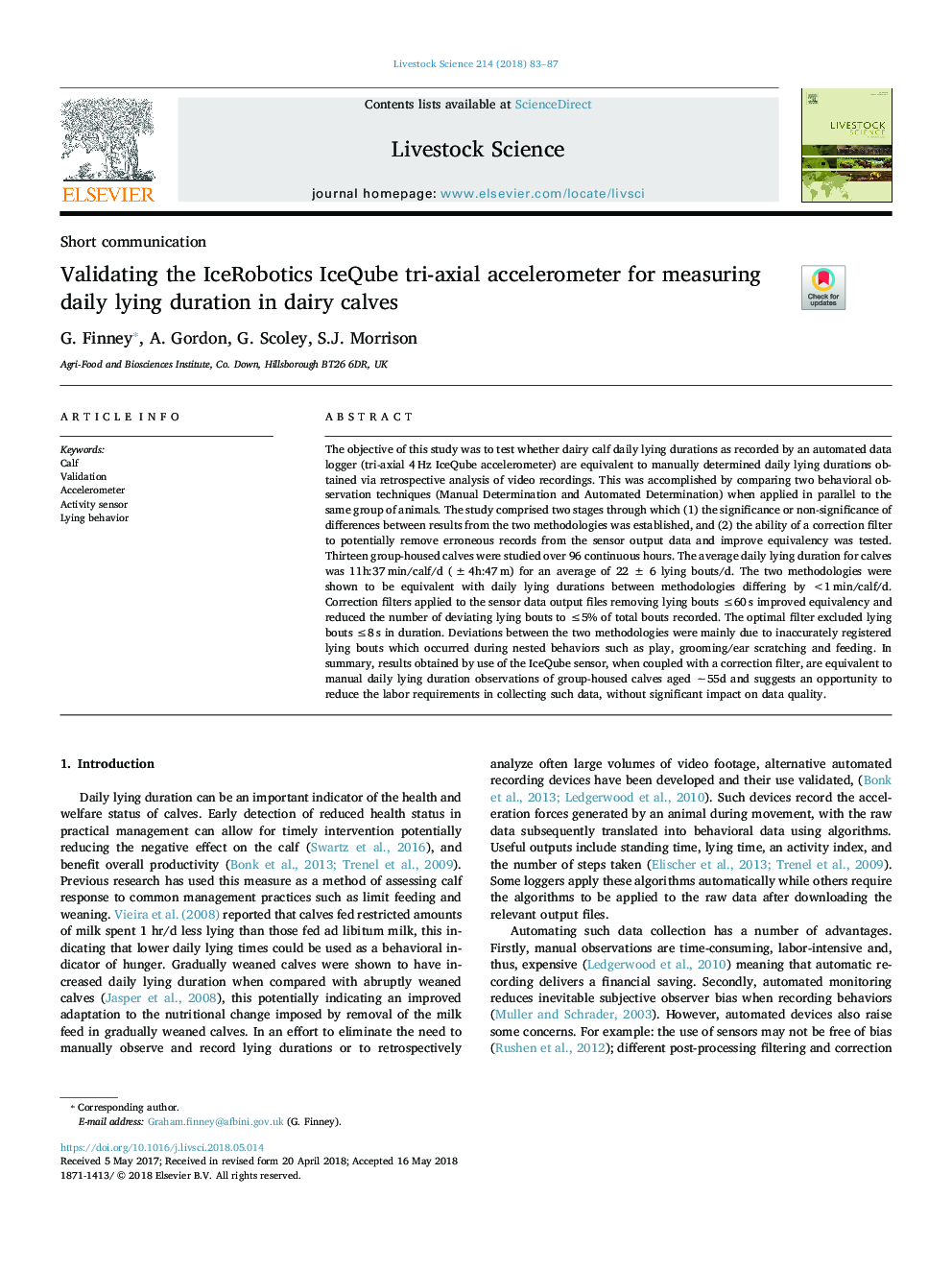| Article ID | Journal | Published Year | Pages | File Type |
|---|---|---|---|---|
| 8501910 | Livestock Science | 2018 | 5 Pages |
Abstract
The objective of this study was to test whether dairy calf daily lying durations as recorded by an automated data logger (tri-axial 4â¯Hz IceQube accelerometer) are equivalent to manually determined daily lying durations obtained via retrospective analysis of video recordings. This was accomplished by comparing two behavioral observation techniques (Manual Determination and Automated Determination) when applied in parallel to the same group of animals. The study comprised two stages through which (1) the significance or non-significance of differences between results from the two methodologies was established, and (2) the ability of a correction filter to potentially remove erroneous records from the sensor output data and improve equivalency was tested. Thirteen group-housed calves were studied over 96 continuous hours. The average daily lying duration for calves was 11h:37â¯min/calf/d (±4h:47â¯m) for an average of 22â¯Â±â¯6 lying bouts/d. The two methodologies were shown to be equivalent with daily lying durations between methodologies differing by <1â¯min/calf/d. Correction filters applied to the sensor data output files removing lying bouts â¤60â¯s improved equivalency and reduced the number of deviating lying bouts to â¤5% of total bouts recorded. The optimal filter excluded lying bouts â¤8â¯s in duration. Deviations between the two methodologies were mainly due to inaccurately registered lying bouts which occurred during nested behaviors such as play, grooming/ear scratching and feeding. In summary, results obtained by use of the IceQube sensor, when coupled with a correction filter, are equivalent to manual daily lying duration observations of group-housed calves aged â¼55d and suggests an opportunity to reduce the labor requirements in collecting such data, without significant impact on data quality.
Related Topics
Life Sciences
Agricultural and Biological Sciences
Animal Science and Zoology
Authors
G. Finney, A. Gordon, G. Scoley, S.J. Morrison,
